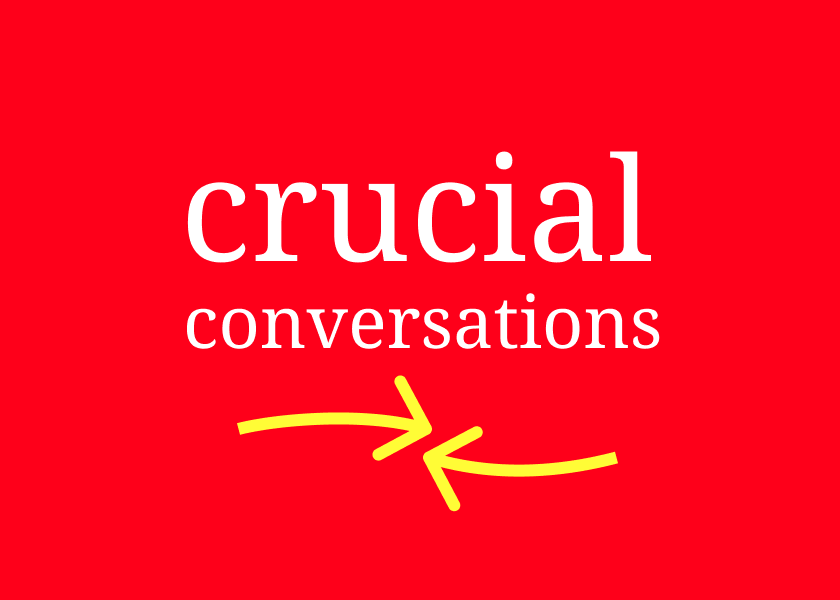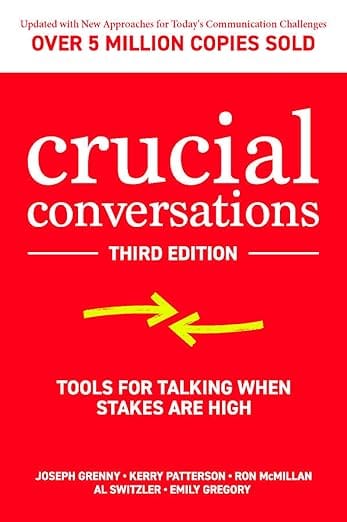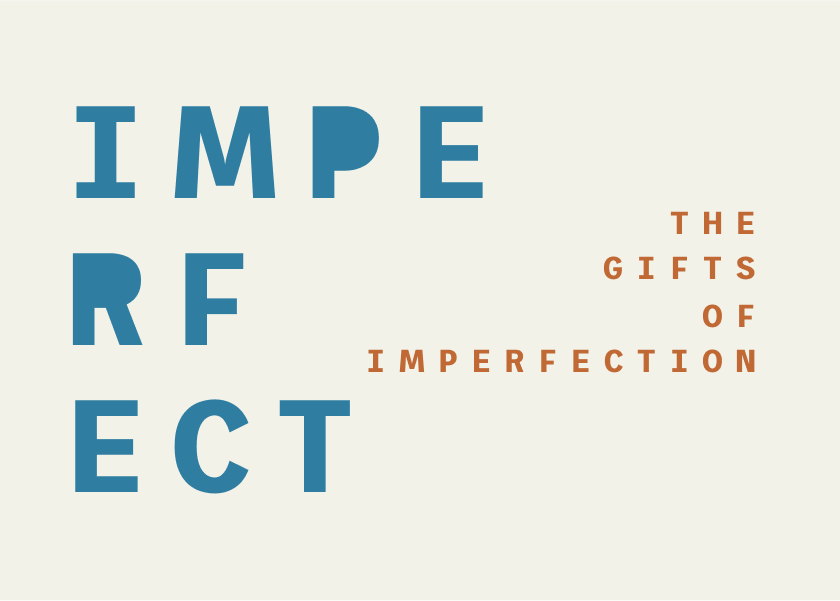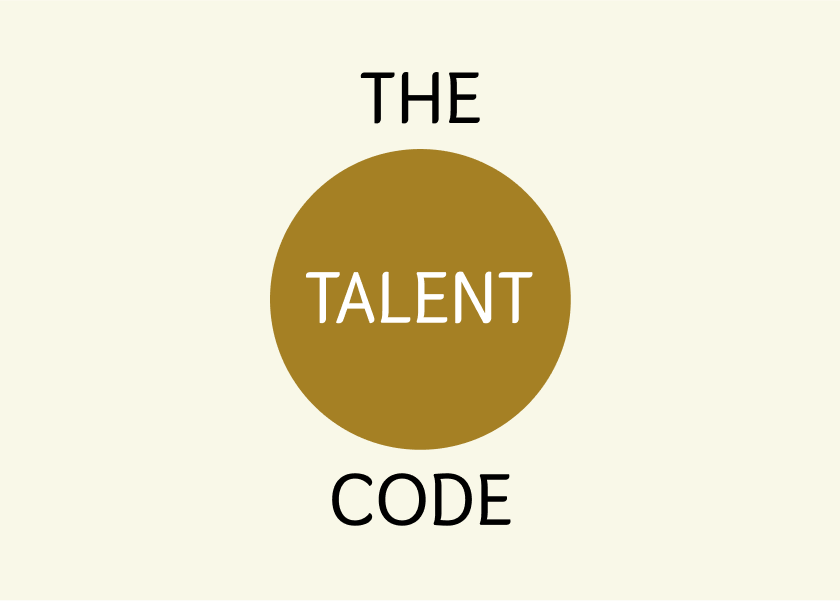Crucial Conversations by Grenny, Patterson, McMillan, Switzler, Gregory - Summary
This book offers tools to navigate high-stakes discussions. It teaches us how to speak honestly and respectfully and how to master dialogue and handle conflict.

The following is a summary of the book Crucial Conversations by Joseph Grenny, Kerry Patterson, Ron McMillan, Al Switzler, and Emily Gregory.
Listen to ShelfHelp's podcast sumarizing the book Crucial Conversations.
Are you tired of tense conversations that go nowhere?
Do you often find yourself avoiding crucial discussions or handling them poorly, leading to frustration and damaged relationships? Crucial Conversations: Tools for Talking When Stakes Are High by Joseph Grenny, Kerry Patterson, Ron McMillan, Al Switzler, and Emily Gregory offers a powerful framework for navigating those difficult moments with skill and grace. This isn’t just another communication guide; it’s a research-backed approach to transforming how you handle high-stakes, emotionally charged interactions. In this article, we’ll dive into the core principles of Crucial Conversations and provide you with actionable insights that can immediately improve your communication. Consider this your guide, saving you time and offering you tips you can use right away to navigate any crucial conversation you might face.
Table of Contents
- About the Author
- Who Should Read This Book?
- Key Insights and Themes
- Detailed Summary
- Review
- Actionable Takeaways
- FAQs
- Conclusion
About the Author
The authors of Crucial Conversations—Kerry Patterson, Joseph Grenny, Ron McMillan, and Al Switzler—are not just academics theorising about communication. They are seasoned experts in corporate training and organizational performance. As cofounders of VitalSmarts, they have spent years researching and applying these principles in real-world settings, from corporations to families. Their credibility is bolstered by the fact that they have also authored four New York Times bestsellers, including Crucial Confrontations, Influencer, and Change Anything. This collective experience and expertise means that Crucial Conversations is rooted in practical application, not just theory.
Who Should Read This Book?
Crucial Conversations is a must-read for anyone who deals with difficult conversations, which is practically everyone. However, it is especially beneficial for:
- Managers and Leaders: Those who need to address performance issues, navigate team conflicts, and drive organizational change will find these tools invaluable. The book offers a way to stand up to the boss without committing career suicide.
- Team Members: This book will enable team members to improve collaboration, handle disagreements constructively, and hold each other accountable. It will also help those who work in virtual teams, where poor communication can create problems.
- Individuals in Personal Relationships: Whether it’s with a spouse, family member, or friend, the principles in Crucial Conversations can dramatically improve your personal relationships. The book offers skills for talking to almost anyone about almost anything.
- Healthcare Professionals: The book can be useful in situations where clear communication can save lives by helping nurses and doctors discuss vital concerns effectively.
- Anyone Seeking Personal Growth: If you want to improve your communication, this book can help you develop self-awareness and self-control. The ideas presented have helped people reunite with estranged family members, make better financial decisions, and even save a life during a carjacking.
Key Insights and Themes
Here are some of the key takeaways and main ideas from Crucial Conversations:
- Dialogue is Key: The core of successful conversations is the free flow of relevant information. Skilled communicators ensure that all opinions and feelings are openly expressed.
- Start with Heart: Begin by focusing on what you truly want for yourself, the other person, and the relationship. This helps in avoiding unhealthy games and unproductive reactions.
- Learn to Look: Recognise when a conversation is becoming crucial. Watch out for signs that safety is at risk, and that people are moving toward silence or violence.
- Make it Safe: Create an environment where everyone feels comfortable sharing their views. Restore safety by using techniques like Contrasting, and creating mutual purpose.
- Master Your Stories: Don't let your emotions control you. Challenge the stories that are causing you to react negatively. Distinguish between facts and the stories you create based on those facts.
- STATE My Path: Share your views by presenting your facts, telling your story, asking for others’ views, and talking tentatively. Make it clear that you want your views challenged.
- Explore Others’ Paths: Listen to understand the other person’s perspective using AMPP (Ask, Mirror, Paraphrase, Prime) skills .
- Move to Action: Turn conversations into clear decisions and actions . Assign responsibilities and document commitments.
- Crucial Conversations are Everywhere: These are everyday interactions that significantly impact your life. When people are dealing with risky issues, the world changes for better or worse.
Detailed Summary
This section breaks down the core concepts of the book, chapter by chapter.
- What’s a Crucial Conversation? And Who Cares?: This chapter defines crucial conversations as discussions where stakes are high, opinions vary, and emotions run strong. It emphasizes that mastering these conversations is key to both personal and professional success. The authors present real-world examples, including a nurse who saved a patient by stepping up to a crucial conversation with a doctor.
- Mastering Crucial Conversations: The Power of Dialogue: The authors argue that dialogue—the free flow of relevant information—is at the heart of successful conversations. They emphasize that skilled people find a way to get all information (from themselves and others) out in the open. The chapter introduces the idea that most problems stem from either not having crucial conversations or not having them well.
- Start with Heart: How to Stay Focused on What You Really Want: This chapter focuses on self-awareness and taking personal responsibility for your behavior. It argues that instead of choosing between getting results and maintaining relationships, you should seek ways to achieve both. The authors introduce the concept of Fool’s Choices, and urge readers to explore alternatives that allow for both honesty and respect.
- Learn to Look: How to Notice When Safety Is at Risk: This chapter teaches how to recognize when a conversation is becoming crucial and when safety is at risk. The authors discuss the importance of being aware of your Style Under Stress, and how you might revert to silence or violence. The Style Under Stress Test helps you identify which tactics you typically use when caught in the midst of a crucial conversation.
- Make It Safe: How to Make It Safe to Talk About Almost Anything: When safety is at risk, you must step out of the conversation, and make it safe. This chapter introduces the techniques of Contrasting (explaining what you don't mean and what you do mean), and creating Mutual Purpose (finding common goals) as ways to restore safety. It emphasizes the importance of maintaining both Mutual Respect and Mutual Purpose.
- Master My Stories: How to Stay in Dialogue When You're Angry, Scared, or Hurt: This chapter emphasizes that our stories are interpretations of facts, and are not facts themselves. By learning to control our Path to Action, we can better manage our emotions and behaviors. The authors discuss the problems with Victim, Villain, and Helpless Stories, and suggest how to create healthier stories.
- STATE My Path: How to Speak Persuasively, Not Abrasively: This chapter introduces the STATE method for sharing your views effectively: Share your facts, Tell your story, Ask for others' paths, Talk tentatively, and Encourage testing. The authors explain how beginning with facts and talking tentatively can help you add your meaning to the shared pool.
- Explore Others' Paths: How to Listen When Others Blow Up or Clam Up: The key to dialogue is listening in a way that makes it safe for others to share their thoughts, even if they're hostile or fearful. The chapter introduces the AMPP listening tools: Ask, Mirror, Paraphrase, and Prime, as strategies for encouraging others to share their stories.
- Move to Action: How to Turn Crucial Conversations into Action and Results: This chapter discusses how to turn successful conversations into clear decisions and actions. It explores four different methods of decision-making including Command, Consult, Vote, and Consensus. The authors discuss the importance of assigning responsibilities, setting deadlines, and documenting commitments.
- Yeah, But: Advice for Tough Cases: This chapter addresses common objections and tough scenarios people face. It offers strategies for dealing with subtle behaviours and for overcoming problems such as ingrained deference.
- Putting It All Together: Tools for Preparing and Learning: This chapter simplifies the previous concepts and skills into a model that can help you remember the principles of dialogue. It provides a summary of the seven dialogue principles, along with a list of questions that will help you apply the skills to your conversations. It also provides an example of a tough discussion to illustrate the principles in action.
Review
Crucial Conversations is a powerful book that offers practical tools for handling difficult interactions.
Strengths:
- Research-Based: The skills presented are derived from over twenty years of research.
- Practical Application: The book focuses on actionable techniques that can be applied immediately.
- Real-World Examples: The authors provide numerous examples of crucial conversations in various settings, making the content relatable.
- Comprehensive Approach: The book covers all aspects of a crucial conversation, from preparing to taking action.
- Life-Changing Impact: Many readers report that this book has positively impacted both their personal and professional lives.
Weaknesses:
- Demands Self-Reflection: The book requires a lot of self-reflection and honest evaluation of your own behaviors.
- Requires Practice: The skills need practice and conscious effort to apply effectively.
- No Guarantees: The authors acknowledge that even if you follow all of the book’s advice, you cannot guarantee that others will cooperate.
Actionable Takeaways
How to Apply These Lessons in Real Life:
- Identify a Crucial Conversation: Think of a difficult conversation that you have been avoiding or handling poorly.
- Prepare Your Heart: Before the conversation, focus on what you want to achieve for yourself, the other person, and the relationship.
- Learn to Look: As you engage in a tough conversation, monitor for signs that safety is at risk, and that people are moving to silence or violence.
- Practice the STATE Method: When sharing your views, begin with facts and talk tentatively. Ask for other’s views.
- Use AMPP Skills: When listening, use Ask, Mirror, Paraphrase, and Prime to understand the other’s point of view .
- Look for Mutual Purpose: Try to find common ground and shared goals to maintain a sense of mutual respect.
- Document Decisions: Always document decisions, assignments, and deadlines to ensure clear understanding and accountability.
- Be Patient: Recognize that it takes time to master these skills, so practice and be patient with yourself as you improve.
FAQs
- What is Crucial Conversations about?
- Crucial Conversations is a book about improving communication skills, particularly during high-stakes, emotionally charged discussions. It provides practical tools for navigating difficult conversations and building healthier relationships.
- Is Crucial Conversations worth reading?
- Yes, absolutely. The book is backed by extensive research and offers practical, actionable advice that can improve both your personal and professional life. Readers have described it as life-changing.
- Can these skills be used in any situation?
- Yes. The skills discussed in the book can be applied to a wide range of situations from the workplace to the home, and even in interactions with strangers.
- Is this book only for people who are bad at communication?
- No, this book is for everyone, and the authors emphasize that even the best communicators can improve. The core concepts can help people at all levels improve their dialogue skills.
Conclusion
Crucial Conversations provides more than just communication techniques; it offers a roadmap to better relationships and more effective leadership. By understanding the principles of dialogue and practicing the skills presented in this book, you can transform how you approach difficult conversations, leading to better outcomes and stronger connections. This book does not just teach you what to do, it teaches you how to think. It encourages personal accountability, and will help you approach conversations in a way that is both kind and honest. Take the first step toward mastering your crucial moments today!
As an Amazon Associate, ShelfHelp may earn money from qualifying purchases. Needless to say, ShelfHelp only includes affiliate links to books we recommend and think are worth your time reading.




